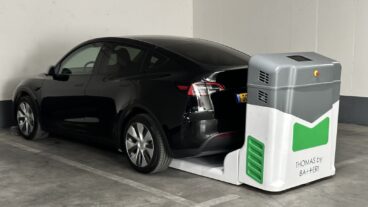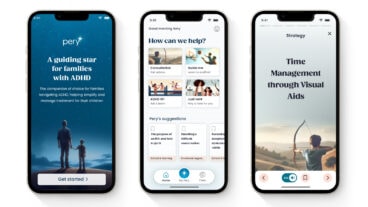Cellint’s TrafficSense notifies you of road traffic and provides you with alternative routes.When was the last time you sat in the middle of a freeway traffic jam? Today? Yesterday?
Don’t you wish there was a system attached to your car that would notify you when a highway was blocked up and would provide you with alternative routes to take?
Now, thanks to Cellint’s TrafficSense system, you’ll soon be able to do just that – all conveniently on your own cellphone.
The Israeli company has developed a comprehensive solution for highway authorities and departments of transportations which provides real-time collection of travel time, traffic speed data, traffic lines and incident alerts. And according to Cellint’s Astorre Modena, their consumer system is already operational and will be available soon. Which means that you – the driver – will know where the traffic is and how to avoid it.
“The idea behind TrafficSense is built upon the premise that increasingly, everybody has their cell phone on while they’re driving,” explained Modena, Cellint’s Vice President of Business Development and Marketing. “Via a concept we call anonymous signaling, we’re able to take anonymous data on the location of people based on their cell phones, and we’re able to extrapolate that into traffic statistics.”
“The information is relayed directly to the traffic management system of the road operator – it’s quick, easy to install, and there’s no problem with privacy. We send the data to the traffic management system via a user interface and they have all the data on screens instantly,” Modena told ISRAEL21c.
The TrafficSense system is based on Cellint’s innovative proprietary technology and platform ‘VirtualSensor’ that can find the exact location of all active mobile phone without loading the cellular network and without changing it in any way, simply by analyzing the control signals on the cellular network.
Unlike traffic detection sensors that detect incidents and measure travel times at sensor locations only, the TrafficSense technology allows travel time measurements over dynamic travel intervals and accurate incident detection anywhere
on the roads.
VirtualSensor connects in a passive way to cellular networks and continuously monitors control channel communication of anonymous cellular phones. This data is immediately correlated with reference data using unique pattern matching algorithms to identify the exact road and extract accurate travel time.
The idea of producing traveler information from cellphone use is not new. In the late 1990s, several smaller technology firms introduced such approaches as cellphone call triangulation and related methods to anonymously track callers on their routes. In many cases, those efforts were inspired by related efforts to help cellphone companies comply with the FCC mandate to track the location of cellular-based 911 calls. While those approaches showed promise at the time, none of those early efforts proved both economically and operationally feasible for transportation applications.
But Cellint is standing out among the companies that are changing that feasibility outlook. Founded in 2001, the company is based in Lod where nine of its 12-person staff works (the other three work out of their New Jersey sales and marketing office). Its CEO Ofer Avni, was co-founder and director of Idioma Ltd. the global market leader in automated media monitoring solutions.
The major testing ground for TrafficSense has been the Ayalon Freeway, the main highway in Tel Aviv – where the system has been operational since 2002. Testing has been coordinated with the Ayalon highway authority, a subsidiary of the Israeli Department of Transportation (DOT).
“On the Ayalon, the existing system was installed in the following way,” explained Modena. “Every 400 yards or so, there was an electronic traffic sensor installed. Data was transmitted to the transmission room of the Ayalon authority operators – with information on how long it takes to get from place to place, if there are any blockages caused by breakdowns or accidents.”
Roadwork teams would be dispatched upon receiving the information in order to helped distressed commuters.
“This system was a huge investment which cost $100,000 per kilometer, and took years to install. It’s extremely expensive and time consuming to dig up the road in order to install the sensor, not to mention the traffic it causes. If you install it while the road is being built, it’s not as bad, but if you have to dig up the road, it’s real trouble,” said Modena.
Cellint’s TrafficSense solution provides a quicker way to get even more accurate information at a fraction of the cost, explained Modena, with extremely little infrastructure and no disruptions to the commuter for installation. Not to mention the time saved.
“A whole city can be hooked up in six months – instead of the five years or so it would take installing the sensor system,” said Modena.
In the US, departments of transportation are increasingly in need of the type of data cellular mining technologies like Cellint’s can provide.
“Transportation agencies are going to have probe data from vehicles on the highway system available to them through one means or another, either through one of these corporations that track cellphones or some technology like that, or through something like VII (Vehicle Infrastructure Integration),” said Bill Jones, the US Dept. of Transportation’s ITS Joint Program Office’s Technical Director to “We think that’s what’s going to happen in the long term, and that’s why we are pursuing – or at least encouraging – that these kinds of tests be run,” he told the Delcan.net website.
According to Modena, Cellint is currently in negotiations with a number of DOTs in the US and Europe. He admits there is competition from other companies in the field but is adamant that Trafficsense is much more effective.
“There’s less infrastructure required than other solutions, and it offers a more precise assessment in an urban environment,” he said.
This issue becomes vital when dealing with the system Cellint has developed for drivers, which will revolutionize the way in which commuters will get from place to place.
“Many traffic jams develop from nothing to a major jam in a few minutes – so a real time solution is needed,” said Modena. “We already have a system for consumers that will be operational soon that will enable drivers to determine the quickest way to get from place to place. It won’t be theoretical like an Internet trip planner which is unaware of existing traffic – but in real time, with the knowledge of the traffic on the roads at that moment. It will be up to date as of the traffic five minutes ago.”
And for commuters, that means full speed ahead.












